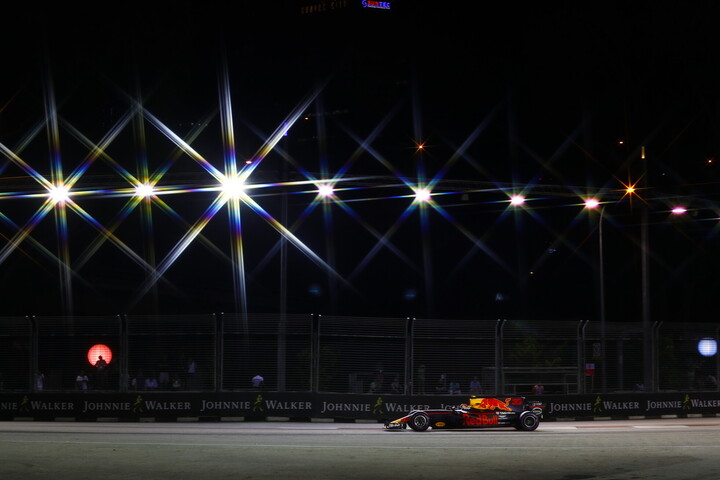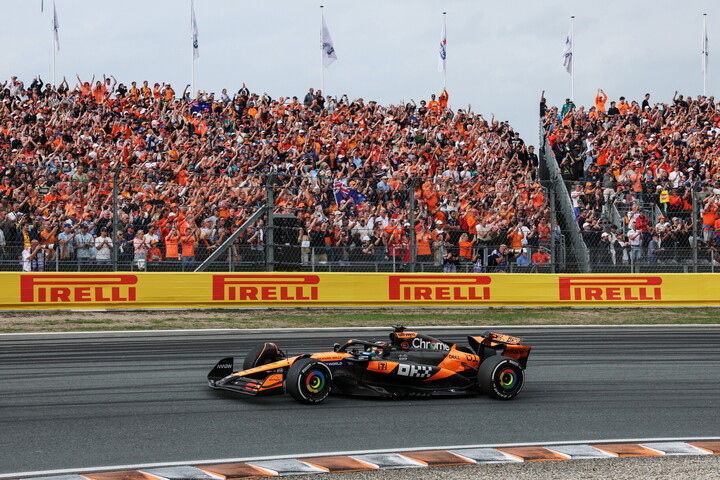On this week #32: Nigel Mansell

On 8 August 1953, Nigel Mansell was born in Upton-upon-Severn. The 1992 Formula 1 World Champion was a person who fired up his fans more than most, with is impetuous nature, his determination and his all or nothing approach on track. But at the same time, he was a divisive figure, irritating many, including his opponents and team-mates.
Mansell took his time getting to Formula 1, having given up his job as an aerospace engineer, selling all his assets to finance a campaign in British Formula Ford. He also suffered some serious injuries in on track accidents that put his future in doubt. He came to the attention of Colin Chapman with his aggressive style in Formula 3 and in 1979, the Lotus boss gave him a test to find a potential replacement for Carlos Reutemann who was leaving the team the following year. In the end, Elio de Angelis got the drive, but Nigel was taken on as test driver. In 1980, the Englishman made is race debut in the Austrian Grand Prix, but retired with a broken engine, while a fuel leak in the cockpit left him with serious burns on his buttocks.
Mansell got on really well with Chapman and he was devasted when the genial founder of Lotus died suddenly in 1982. He left the team in 1984 having raced for them in 59 Grands Prix: there had been far more crashes than points finishes and his best result was a third place, a position he finished in five times.

1985 marked the start of his defining relationship with Williams and Honda, the team which would bring him glory, although not immediately. He had to wait 13 races for the sweet taste of success. It happened at Brands Hatch in the European Grand Prix and he finally stood on the podium, bursting into tears, overcome with emotion. From then on, he enjoyed a purple patch, with eleven wins over two seasons, better than any other driver. And yet, in 1986 and in 1987 he still failed to take the title. The first year, the Englishman arrived in Adelaide (Australia) leading Alain Prost (McLaren) by six points, seven ahead of his Williams team-mate, Nelson Piquet. The relationship between the pair was far from idyllic to put it mildly. Mansell was third when, with 18 laps remaining, his left rear tyre exploded, leaving the way clear for Prost to secure his first championship crown. The following year, the Piquet-Mansell duo arrived in Suzuka for the penultimate round with the Englishman needing to win at Honda's home track and then at the final race in Adelaide, to overtake the Brazilian. Mansell crashed in the first qualifying session at Suzuka, suffering a spinal concussion, which meant he was unable to race in Australia thus handing the title to his hated team-mate, who had called him an uneducated blockhead. The highlight of 1987 was undoubtedly his home race at Silverstone which turned into a duel between him and Piquet. Before half-distance, Mansell opted to pit for new tyres when lying behind the Brazilian who chose to run all the way to the flag without stopping. The Englishman was on a charge on his fresh tyres and with two laps remaining he caught and passed Piquet to take the lead.

Mansell stopped on his slowing-down lap and was immediately surrounded by his adoring fans who had invaded the track. It was thought he'd run out of fuel, but in fact the Honda engine had broken, so hard had Nigel pushed it in his bid to catch Piquet. Honda was not impressed, just as it wasn't thrilled, to put it politely, with how Mansell behaved and the manner in which the team handled the battle between its drivers which cost them the 1986 title. Come the end of the year, a quickie divorce saw the Japanese constructor embark on a relationship with McLaren, just as Ayrton Senna also headed to the Woking team. Piquet was off to Lotus where he was up against a far more manageable team-mate in the shape of Satoru Nakajima, as well as a Honda engine. Frank Williams and his technical director Patrick Head were left with Mansell, while for motive power they had to rely on a Judd engine.
From 14 Grand Prix starts in 1988, Mansell only saw the chequered flag twice, although on both occasions he finished second. It was time for a change and when an opportunity came to join Ferrari he didn't hesitate. His debut with the Prancing Horse team was incredible. In Rio de Janeiro, Nigel Mansell gave the F1-89, the first car fitted with an electronically controlled gearbox and controls on the steering, its maiden victory, an historic moment. Then came four consecutive retirements and one disqualification before a series of podium finishes, culminating with an amazing win at the Hungaroring, thanks to an epic overtaking move on Senna. Then came four more races with no points to run off the year, a mix of technical retirements and accidents.
At Maranello, they were aiming for the world titles, under the leadership of Cesare Fiorio and with this in mind, they hired Alain Prost, fresh from coming out on top in the war with Senna at McLaren. His Ferrari had the champion's number 1 and in theory he also had that status within the teams, something that definitely did not go down well with Mansell. Even though the Italian tifosi really took to Nigel, within the team, relations were strained to the extent that, at Silverstone Mansell announced he would be retiring at the end of the season. The inter-Ferrari showdown came at Estoril. Mansell was on pole with Prost alongside him and Senna, with whom the Frenchman was again battling for the title, in third place. At the start, Mansell made no attempt to defend from the Brazilian, instead visibly turning right to close the door on Prost, which allowed Senna to slip past and take the lead. Mansell did retake the place and went on to win, but Prost could no longer be champion. The Italian adventure was over and Ferrari signed up a young and ambitious Frenchman by the name of Jean Alesi, while Mansell headed back to Williams once he had changed his mind about retiring.
In 1991, Mansell won quite a few races with the Renault-powered Williams but Senna's McLaren-Honda had too much of an advantage, especially in terms of reliability. Then, the following year everything changed. Didcot's FW14B proved to be an almost unbeatable creation, its superiority coming from its active suspension and its engine: 10 wins from 16 races, nine of them down to Mansell. Finally, “the lion” as the Ferrari fans had nicknamed him, achieved his dream of being world champion, but he didn't lighten up much, once again announcing his retirement, irritated at the thought of once again finding Alain Prost as his team-mate in 1993, thanks to backing from Renault. Frank Williams and Patrick Head could not convince him to stay and he headed off across the Atlantic to race in the USA, winning the CART championship at his first attempt, with the Newman-Haas team. He took his prickly nature with him and Mario Andretti described him as “the worst team-mate I've ever had.” In 1994 the car was not as competitive.
Back in Europe, came the tragic death of Ayrton Senna at the wheel of a Williams and his former team asked Nigel to come back and help support a young Damon Hill in his battle with Michael Schumacher. The move didn't work but Mansell rediscovered a taste for victory winning the season final in Adelaide after the two title contenders had collided and retired. At the age of 41, Mansell bid farewell to Williams for a third and final time and accepted an offer to drive for a revitalised McLaren, now in partnership with Mercedes. But things did not go well as the cockpit was too much of a tight fit for him and he only took part in two Grands Prix. His career effectively ended there, apart from a few cameo appearances, for example in the British Touring Car championship. He retired a wealthy man, managing various businesses, including a Ferrari dealership and a golf and country club to satisfy his passion for golf which he played at a professional level. He finally had time to enjoy life with his wife Rosanne and their three sons.

Mansell's Formula career spanned 187 Grands Prix, of which he won 31, starting on pole 32 times, securing 59 podium finishes. He retired 92 times, almost half of all the races and but for that, his palmares would no doubt have been more impressive. They weren't all his fault, but he was never remembered for his race management skills. Win or bust was the only way he knew.




